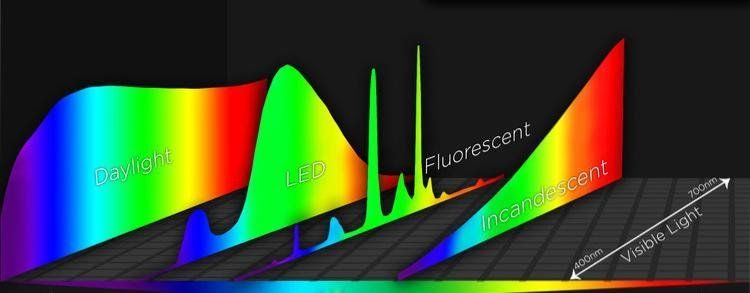Common LED Specs Explained and Why They Matter
HardWire Lighting is dedicated not only to providing you with exceptional lighting products at an affordable price, we also want educated, well informed customers. This article’s primary purpose is to provide that fount of information so you can make the best decisions for your lighting needs. Below is a quick list of eight important terms and their importance when it comes to lighting in general and LED lighting in particular.
1. Lumens
Lumens are the measurement of how much light the bulb puts out. Lumens are important in comparing an LED bulb to a traditional source. Comparing the lumens of an LED bulb to the lumens of a traditional one will help determine if an LED bulb will be bright enough to directly replace your traditional lamp.
2. Center Beam Candle Power (CBCP)
Center beam candle power measures the intensity of light at the center of a beam of light. This is an important measurement for spot and accent lighting. It often isn't enough to only use the lumen output when determining if a lamp will be bright enough.
It is possible to have a high lumen output, but a low CBCP. This would imply that the light is spread out over a large area, which wouldn't work well for highlighting something hanging on the wall, for example.
3. Efficacy (lumens per watt)
Efficacy is a ratio of how many lumens are produced (how much light) per watt of energy consumed. The higher the efficacy ratio, the more efficiently your product is performing. Manufacturers are making huge improvements to both engineering and manufacturing processes, and efficacy ratings are constantly improving.
4. Wattage
Wattage is simply the measure of how much energy a lamp needs to light up. The wattage of an LED lamp is usually going to be its most marketed feature. While there are other benefits to LED lighting over traditional lighting, their reduced wattage consumption is still their biggest advantage.
5. Replacement wattage
Replacement wattage indicates the wattage of the traditional lamp that is being replaced by the LED bulb or fixture. Replacement wattage will help you find an LED bulb that will be bright enough to replace the one that you are currently using. For example, you may see an LED A-lamp that only uses 8 watts, but its replacement wattage is for a 40W incandescent bulb.
6. Rated life
The rated life of an LED is how long it is intended to operate before reaching 70 percent of its original brightness. With traditional light sources, the rated life is the length of time the product is expected to operate before burning out. This is set by listing the number of hours it takes for 50 percent of a sample of identical products to burn out. LEDs don’t typically burn out. They slowly dim over time. An LED’s rated life is therefore when the lamp is expected to be 30 percent dimmer than it was when brand new. Another key advantage LEDs have over traditional lighting is how long they last. There are LED bulbs that can replace a 4,000-hour halogen lamp and will still be at over 70% of their original brightness for up to 50,000 hours. All of HardWire’s products come with an industry-leading 10-year warranty.
7. Correlated Color Temperature (CCT)
Correlated Color Temperature, also shortened to “color temperature” is a numerical value that indicates the color of light a particular fixture or bulb will emit. A low number indicates warm light. Think, fireplace or candlelight quality (red and orange hues). A higher number indicates a cooler light like daylight and hospital lighting (whites and blues). Standard ranges are around 2700K on the warm side to 5000K on the cool side. It is important to know the approximate color temperature range of your existing lighting, so you can find a suitable replacement.
8. Color Rendering Index (CRI)
While a bit complicated and somewhat controversial this, in essence, measures a light source's ability to reflect colors accurately. It’s a 100-point scale where a score of 100 would be perfect. If you’ve ever been somewhere where it just felt like you couldn’t focus or see things clearly? The light source likely had a very low CRI. A light’s CRI is independent of color temperature, so a warmer, yellower light may have a very high CRI while a very cool, almost white light could have a very low CRI. All of the lights HardWire sources for its retrofit projects are rated at least 80 on the CRI, with some reaching 90+.





